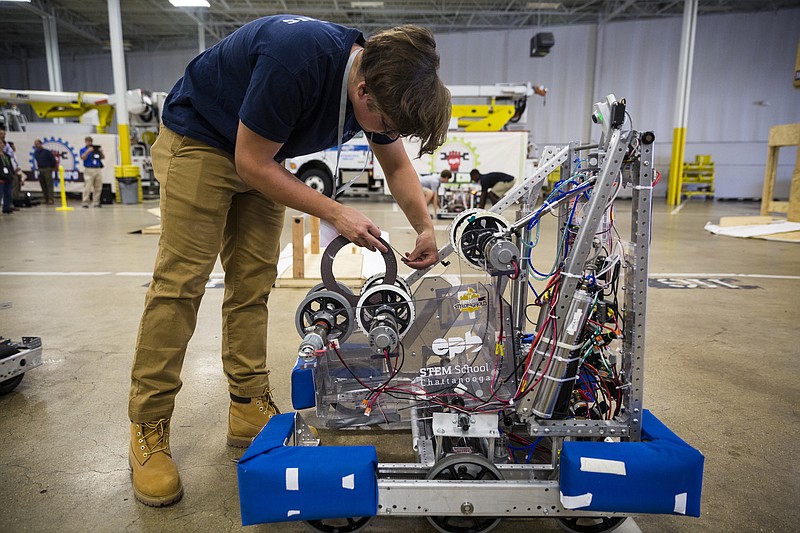Students at the STEM School Chattanooga have been awarded $10,000 to invent a detector for bicyclists who are riding in protected bike lanes.
Fifteen schools nationwide were selected to participate in Lemelson-MIT's 2016-2017 InvenTeams program, and the winners were officially announced today.
Each team will be awarded up to $10,000 to build an invention that solves a real-world problem, and the 15 inventions will be showcased in June at MIT.
This is the fourteenth year of the InvenTeam initiative, and the first time a Hamilton County School has been awarded the prestigious grant.
Alayna Baker is one of the STEM School students working on this invention, and said the grant perfectly aligns with her school's focus on innovation.
"This is a really great opportunity that I'm glad we got," she said over the phone Tuesday.
The team of eight students is in the initial stages of planning their invention, which Baker said will use sensors to detect cyclists and then notify drivers they are nearby at intersections or stop lights.
The team decided on this invention because of the growing cyclist community in Chattanooga and "the issue seemed close to home," Baker said.
Tony Donen, principal at the STEM School, said this grant exemplifies the spirit of the school, as it encourages students to be inventors, problem-solvers and entrepreneurs.
"At school we want to provide students with the opportunity to identify problems and figure out solutions," he said. "They don't just go to school to regurgitate information."
InvenTeam students want to make a difference in the world by creating inventions that can improve lives, said Leigh Estabrooks, invention education officer for the Lemelson-MIT Program.
"It is rewarding to see students actively engaged and integrating STEM while working on their inventive solutions to real-world problems, but the truly inspiring impact is the long-term effect on the students and the leadership qualities the InvenTeam initiative instills in participants," Estabrooks said in a statement.
This year's InvenTeams are from 13 different states and represent public schools, charter schools, private schools and after-school programs, according to the statement.
Other teams are working to invent a system to provide temporary shelter for the homeless, a device to sense pets and children in the backseat of cars and a robotic device that monitors the environment to help prevent heat stress in young chickens.
